Chapter 9
![]()
Multi-Day Session
The materials in this book have been designed to meet a variety of training needs and timeframes. This chapter covers designs suitable for day-and-a-half and two-day training sessions.
As noted in chapter 8, longer learning experiences might raise concerns that participants will be overloaded with information. You can avoid this by designing programs that allow participants to learn efficiently and at their own pace. The purpose of this chapter is to present a significant amount of content in a multi-day session by mixing short, to-the-point theory and models with experiential exercises and assessments. This keeps the participants from feeling overwhelmed and, instead, produces an enjoyable, fruitful learning experience.
In addition, there are important benefits associated with extended learning experiences. Although a shorter program might be seen as part of a typical workday, a longer program can become a memorable life experience for the participant, especially if it is held at an off-site venue and includes an overnight stay. A multi-day design provides ample opportunity to create the learning environment (as discussed in chapter 4) and establish participants as learning partners. Discussion during breaks, meals, and evening activities often provides valuable feedback and learning. It often takes a different physical environment and a complete break from daily routine for participants to focus on learning. Multi-day sessions are appropriate for group training. The learning environment is created and enriched by the backgrounds and experiences of a variety of participants. For multi-day sessions, groups of between 12 and 24 participants are most conducive to a learning environment. Smaller groups can limit the richness of group interactions, and larger groups can become unwieldy for the facilitator and can depersonalize the learning experience.
Please note that although illustrative designs are included, the trainer should adapt them to fit his or her specific purposes. Each design can be modified to take into account the available resources, the learning readiness of potential participants, and, above all, the assessed development needs of the target audience.
Objectives and Use
The objectives of a multi-day training session are to free participants from their daily routines so they can understand the learning content that is of greatest value, as well as build relationships between the trainer and the participants. The group setting and time available for interaction allow for rich and diverse discussion of the various topics.
Note: Residential programs held at appealing off-site facilities can also be used to create a special learning experience.
A multi-day training session is appropriate for the following circumstances:
![]() The targeted, available audience for training is 12 participants or more.
The targeted, available audience for training is 12 participants or more.
![]() The targeted audience requires comprehensive training in all areas of relevant content.
The targeted audience requires comprehensive training in all areas of relevant content.
![]() Training facilities for groups are available.
Training facilities for groups are available.
![]() Participants are available for multiple days.
Participants are available for multiple days.
![]() Funding for meals and possibly an off-site location is available.
Funding for meals and possibly an off-site location is available.
Choosing the Content
Any of the content modules in this book can be used for multi-day training sessions. Although a multi-day session allows time to cover all of the content modules, you may still need to perform a needs assessment of the participant group or review the competencies the organization seeks to develop. Include only those modules indicated by your needs assessment.

With a session that covers multiple days, you have to consider providing meals and possibly overnight accommodations. Hunger and thirst are enemies to the learning environment, so offer beverages and snacks at the breaks, as well as meals at appropriate times, so your participants' biological needs are met. Keep participants together during meals to encourage continued discussion of learning points. This also helps to strengthen the relationships among participants and, therefore, helps support the learning environment. Much discussion and feedback occurs during dinner after a long day of training. As noted in chapter 8, scheduled meals discourage participants from going back to the office and getting distracted from their learning focus. Moreover, providing meals helps to keep your session on schedule because participants are less likely to come back late from the lunch break.
All of the content modules in this book are included in one of the following sample agendas. The timing of the modules assumes that all of the structured experiences will be included.
The placement of the “Participant Introductions,” “Listening Defined,” and “Listening Self-Assessment” modules is important. They should be offered at the beginning of the session because they help focus the participants' learning by creating the context for the remaining content modules.
Sample Agenda, Day One
MATERIALS
For the instructor:
![]() Content Module 10-1: Participant Introductions
Content Module 10-1: Participant Introductions
![]() Content Module 10-2: Listening Defined
Content Module 10-2: Listening Defined
![]() Content Module 10-3: Listening Self-Assessment
Content Module 10-3: Listening Self-Assessment
![]() Content Module 10-4: Types of Listening
Content Module 10-4: Types of Listening
![]() Content Module 10-5: The Listening Process
Content Module 10-5: The Listening Process
![]() Structured Experience 12-1: Listening Buddies
Structured Experience 12-1: Listening Buddies

![]() Structured Experience 12-2: What's That Sound?
Structured Experience 12-2: What's That Sound?
![]() Structured Experience 12-3: Newsworthy Note-Taking
Structured Experience 12-3: Newsworthy Note-Taking
![]() Structured Experience 12-4: Having a Ball
Structured Experience 12-4: Having a Ball
![]() Structured Experience 12-5: Memorize This
Structured Experience 12-5: Memorize This

![]() Training Instrument 11-1: Memory Game Word Lists
Training Instrument 11-1: Memory Game Word Lists
![]() Newspaper article of medium length
Newspaper article of medium length
![]() Tennis or other medium-sized rubber balls for small groups
Tennis or other medium-sized rubber balls for small groups

![]() PowerPoint presentation: Listening Defined. To access slides for this program, open the file Listening Defined.ppt on the accompanying CD. Copies of the slides for this training session are included at the end of chapter 9 (slides 9-1 through 9-10).
PowerPoint presentation: Listening Defined. To access slides for this program, open the file Listening Defined.ppt on the accompanying CD. Copies of the slides for this training session are included at the end of chapter 9 (slides 9-1 through 9-10).
![]() PowerPoint presentation: Types of Listening. To access slides for this program, open the file Types of Listening.ppt on the accompanying CD. Copies of the slides for this training session are included at the end of chapter 9 (slides 9-11 through 9-20).
PowerPoint presentation: Types of Listening. To access slides for this program, open the file Types of Listening.ppt on the accompanying CD. Copies of the slides for this training session are included at the end of chapter 9 (slides 9-11 through 9-20).
![]() PowerPoint presentation: The Listening Process. To access slides for this program, open the file The Listening Process.ppt on the accompanying CD. Copies of the slides for this training session are included at the end of chapter 9 (slides 9-21 through 9-38).
PowerPoint presentation: The Listening Process. To access slides for this program, open the file The Listening Process.ppt on the accompanying CD. Copies of the slides for this training session are included at the end of chapter 9 (slides 9-21 through 9-38).
For the participants:
![]()
![]() Assessment 11-2: Listening Self-Assessment
Assessment 11-2: Listening Self-Assessment
![]() Writing instruments/blank paper
Writing instruments/blank paper
Sample Agenda
| 8:00 a.m. | Content Module 10-1: Participant Introductions (chapter 10) (45 minutes; varies by class size) |
| Objective: Prepare participants to help each other learn. | |
| 8:45 | Content Module 10-2: Listening Defined (chapter 10) (1 hour) |
| Objective: Understand what listening is, the importance of properly defining listening, and its behaviors. | |
| 9:45 | Break (15 minutes) |
| 10:00 | Content Module 10-3: Listening Self-Assessment (chapter 10) (1 hour) |
| Objective: Identify each participant's highest-impact learning. | |
| 11:00 | Begin Content Module 10-4: Types of Listening (chapter 10) (1 hour) |
| Objective: Understand the primary types of listening and tips for using each of them to listen effectively. | |
| 12:00 | Lunch (1 hour) |
| 1:00 | Continue Content Module 10-4: Types of Listening (1 hour) |
| 2:00 | Begin Content Module 10-5: The Listening Process (chapter 10) (1 hour) |
| Objective: Understand a process to use for listening with specific steps for greater effectiveness. | |
| 3:00 | Break (15 minutes) |
| 3:15 | Continue Content Module 10-5: The Listening Process (1 hour, 15 minutes) |
| 4:30 | Close (5 minutes) |
| Objective: Reinforce learning points. | |
| 6:00 | Dinner (if at an off-site location) |
| 7:00 | After-dinner activities (if at a residential off-site location) |
Sample Agenda, Day Two (Full-Day Option)
MATERIALS
For the instructor:
![]() Content Module 10-6: Nonverbal Communication
Content Module 10-6: Nonverbal Communication
![]() Content Module 10-7: Effective Listening Behaviors
Content Module 10-7: Effective Listening Behaviors
![]() Content Module 10-8: The Bad Listener
Content Module 10-8: The Bad Listener
![]() Content Module 10-9: Paraphrasing
Content Module 10-9: Paraphrasing
![]() Content Module 10-10: Empathic Listening
Content Module 10-10: Empathic Listening
![]() Structured Experience 12-6: Nonverbal Nonsense
Structured Experience 12-6: Nonverbal Nonsense

![]() Structured Experience 12-7: Culture Shock
Structured Experience 12-7: Culture Shock
![]() Structured Experience 12-8: Fact or Fiction?
Structured Experience 12-8: Fact or Fiction?
![]() Structured Experience 12-9: Driven to Distraction
Structured Experience 12-9: Driven to Distraction
![]() Structured Experience 12-10: Paraphrasing Partners
Structured Experience 12-10: Paraphrasing Partners
![]() Structured Experience 12-11: Empathic Listening Practice
Structured Experience 12-11: Empathic Listening Practice

![]() PowerPoint presentation: Nonverbal Communication. To access slides for this program, open the file Nonverbal Communication.ppt on the accompanying CD. Copies of the slides for this training session are included at the end of chapter 9 (slides 9-39 through 9-46).
PowerPoint presentation: Nonverbal Communication. To access slides for this program, open the file Nonverbal Communication.ppt on the accompanying CD. Copies of the slides for this training session are included at the end of chapter 9 (slides 9-39 through 9-46).
![]() PowerPoint presentation: Effective Listening Behavior. To access slides for this program, open the file Effective Listening Behavior.ppt on the accompanying CD. Copies of the slides for this training session are included at the end of chapter 9 (slides 9-47 through 9-53).
PowerPoint presentation: Effective Listening Behavior. To access slides for this program, open the file Effective Listening Behavior.ppt on the accompanying CD. Copies of the slides for this training session are included at the end of chapter 9 (slides 9-47 through 9-53).
![]() PowerPoint presentation: The Bad Listener. To access slides for this program, open the file The Bad Listener.ppt on the accompanying CD. Copies of the slides for this training session are included at the end of chapter 9 (slides 9-54 through 9-59).
PowerPoint presentation: The Bad Listener. To access slides for this program, open the file The Bad Listener.ppt on the accompanying CD. Copies of the slides for this training session are included at the end of chapter 9 (slides 9-54 through 9-59).
![]() PowerPoint presentation: Paraphrasing. To access slides for this program, open the file Paraphrasing.ppt on the accompanying CD. Copies of the slides for this training session are included at the end of chapter 9 (slides 9-60 through 9-69).
PowerPoint presentation: Paraphrasing. To access slides for this program, open the file Paraphrasing.ppt on the accompanying CD. Copies of the slides for this training session are included at the end of chapter 9 (slides 9-60 through 9-69).
![]() PowerPoint presentation: Empathic Listening. To access slides for this program, open the file Empathic Listening.ppt on the accompanying CD. Copies of the slides for this training session are included at the end of chapter 9 (slides 9-70 through 9-79).
PowerPoint presentation: Empathic Listening. To access slides for this program, open the file Empathic Listening.ppt on the accompanying CD. Copies of the slides for this training session are included at the end of chapter 9 (slides 9-70 through 9-79).
For the participants:

![]() Handout 12-1: Emotion Word Slips
Handout 12-1: Emotion Word Slips
![]() Handout 12-2: Cultural Differences in Nonverbal Communication
Handout 12-2: Cultural Differences in Nonverbal Communication
![]() Handout 12-3: Argument Analysis
Handout 12-3: Argument Analysis

![]() Training Instrument 11-2: Empathic Listening Observation Checklist
Training Instrument 11-2: Empathic Listening Observation Checklist
![]() Writing instruments/blank paper
Writing instruments/blank paper
Sample Agenda
| 8:00 a.m. | Content Module 10-6: Nonverbal Communication (chapter 10) (1 hour, 45 minutes) |
| Objective: Understand the importance of nonverbal communication. | |
| 9:45 | Break (15 minutes) |
| 10:00 | Content Module 10-7: Effective Listening Behavior (chapter 10) (1 hour, 15 minutes) |
| Objective: Learn general principles and techniques for being an effective listener, including separating fact from generalization. | |
| 11:15 | Content Module 10-8: The Bad Listener (chapter 10) (1 hour) |
| Objective: Explore the many types of bad listening behaviors and how to recognize them. | |
| 12:15 | Lunch (1 hour) |
| 1:15 | Content Module 10-9: Paraphrasing (chapter 10) (1 hour, 30 minutes) |
| Objective: Understand the elements and techniques of paraphrasing, one of many helpful listening techniques. | |
| 2:45 | Break (15 minutes) |
| 3:00 | Content Module 10-10: Empathic Listening (chapter 10) (1 hour, 30 minutes) |
| Objective: Learn a common listening technique that is especially effective in diffusing emotionally charged situations or dealing with conflict. |
|
| 4:30 | Close (5 minutes) |
| Objective: Reinforce learning points. |
Sample Agenda, Day Two (Half-Day Option)
MATERIALS
For the instructor:
![]() Content Module 10-10: Empathic Listening
Content Module 10-10: Empathic Listening
![]() Content Module 10-11: Giving and Receiving Feedback
Content Module 10-11: Giving and Receiving Feedback

![]() Structured Experience 12-11: Empathic Listening Practice
Structured Experience 12-11: Empathic Listening Practice
![]() Structured Experience 12-12: Fun With Feedback
Structured Experience 12-12: Fun With Feedback

![]() PowerPoint presentation: Empathic Listening. To access slides for this program, open the file Empathic Listening.ppt on the accompanying CD. Copies of the slides for this training session are included at the end of chapter 9 (slides 9-70 through 9-79).
PowerPoint presentation: Empathic Listening. To access slides for this program, open the file Empathic Listening.ppt on the accompanying CD. Copies of the slides for this training session are included at the end of chapter 9 (slides 9-70 through 9-79).
![]() PowerPoint presentation: Giving and Receiving Feedback. To access slides for this program, open the file Giving and Receiving Feedback.ppt on the accompanying CD. Copies of the slides for this training session are included at the end of chapter 9 (slides 9-80 through 9-91).
PowerPoint presentation: Giving and Receiving Feedback. To access slides for this program, open the file Giving and Receiving Feedback.ppt on the accompanying CD. Copies of the slides for this training session are included at the end of chapter 9 (slides 9-80 through 9-91).
For the participants:
![]()
![]() Assessment 11-7: Feedback Self-Assessment
Assessment 11-7: Feedback Self-Assessment
![]() Training Instrument 11-2: Empathic Listening Observation Checklist
Training Instrument 11-2: Empathic Listening Observation Checklist

![]() Training Instrument 11-3: Feedback Observation Worksheet
Training Instrument 11-3: Feedback Observation Worksheet

![]() Handout 12-4: Feedback Role-Play Scenarios
Handout 12-4: Feedback Role-Play Scenarios
![]() Writing instruments
Writing instruments
Sample Agenda
| 8:00 a.m. | Content Module 10-10: Empathic Listening (chapter 10) (1 hour, 30 minutes) |
| Objective: Learn a common listening technique that is especially effective in diffusing emotionally charged situations or dealing with conflict. |
|
| 9:30 | Break (15 minutes) |
| 9:45 | Content Module 10-11: Giving and Receiving Feedback (chapter 10) (2 hours) |
| Objective: Learn principles and techniques for giving and receiving feedback effectively. | |
| 11:45 | Close (5 Minutes) |
| Objective: Reinforce learning points. |
Step-by-Step Planning
Just before the training session:
![]() If this is a residential program, confirm rooming list with hotel.
If this is a residential program, confirm rooming list with hotel.
![]() Arrive early at the facility.
Arrive early at the facility.
![]() Set up and test equipment (for example, laptop, projector, flipcharts).
Set up and test equipment (for example, laptop, projector, flipcharts).
![]() Confirm refreshments.
Confirm refreshments.
At the training session:
![]() Introduce yourself to the participants. Include a description of your role in the training process and your training and work experience. First impressions count, and this is your chance to establish credibility with the participants.
Introduce yourself to the participants. Include a description of your role in the training process and your training and work experience. First impressions count, and this is your chance to establish credibility with the participants.
![]() If you do not use the participant introduction exercise, ask the participants to introduce themselves by sharing their names, roles, and what they would like to gain from the training. Let them know they will be helping each other learn.
If you do not use the participant introduction exercise, ask the participants to introduce themselves by sharing their names, roles, and what they would like to gain from the training. Let them know they will be helping each other learn.
![]() Review each day's agenda and learning objectives with the participants.
Review each day's agenda and learning objectives with the participants.
![]() Go through the selected content modules.
Go through the selected content modules.
![]() Ask for questions, and test for understanding frequently.
Ask for questions, and test for understanding frequently.
![]() Close each day with an opportunity for the participants to ask questions.
Close each day with an opportunity for the participants to ask questions.

What to Do Next
![]() Identify the training participants. Assess their most critical training needs or identify the competencies the organization seeks to develop.
Identify the training participants. Assess their most critical training needs or identify the competencies the organization seeks to develop.
![]() Design the agenda using the highest value content modules based on your needs assessment or the required competencies.
Design the agenda using the highest value content modules based on your needs assessment or the required competencies.
![]() Schedule the session.
Schedule the session.
![]() Arrange a facility for the training session. Book a block of rooms if this is a residential program.
Arrange a facility for the training session. Book a block of rooms if this is a residential program.
![]() Invite participants. Check for any special dietary needs. If this is a residential program, check for rooming requirements (smoking/ nonsmoking, single/double bed, and so forth).
Invite participants. Check for any special dietary needs. If this is a residential program, check for rooming requirements (smoking/ nonsmoking, single/double bed, and so forth).
![]() Send a confirmation to participants. Include an agenda and any prework with the confirmation.
Send a confirmation to participants. Include an agenda and any prework with the confirmation.
![]() Prepare training materials (handouts, overheads, presentations, and exercise materials).
Prepare training materials (handouts, overheads, presentations, and exercise materials).
![]() Order food and beverages.
Order food and beverages.
Slide 9-1

Slide 9-2

Slide 9-3

Slide 9-4
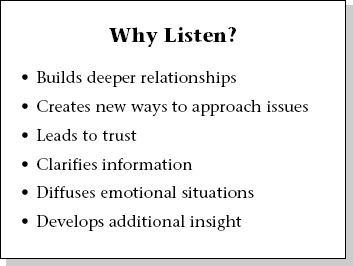
Slide 9-5
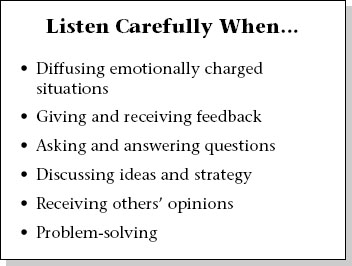
Slide 9-6

Slide 9-7

Slide 9-8
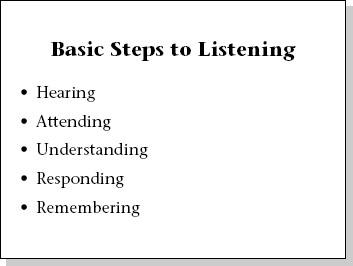
Slide 9-9

Slide 9-10

Slide 9-11

Slide 9-12
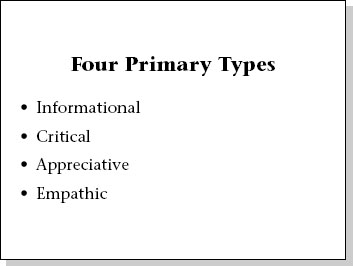
Slide 9-13
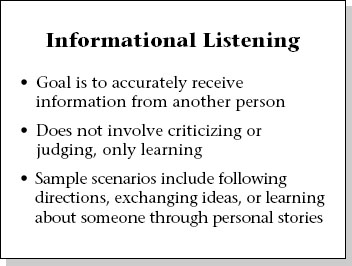
Slide 9-14

Slide 9-15
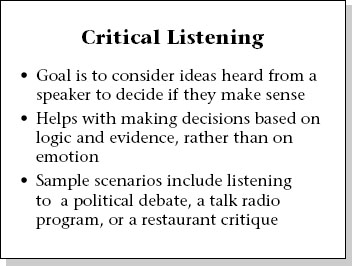
Slide 9-16

Slide 9-17

Slide 9-18
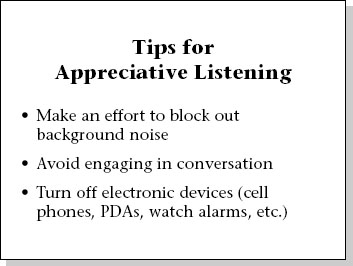
Slide 9-19
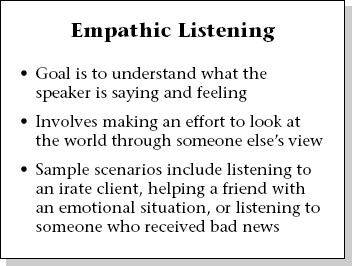
Slide 9-20
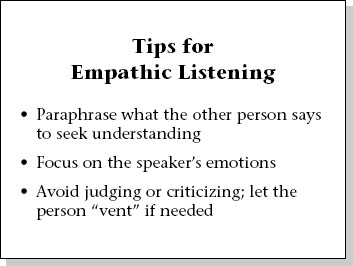
Slide 9-21

Slide 9-22

Slide 9-23

Slide 9-24

Slide 9-25

Slide 9-26
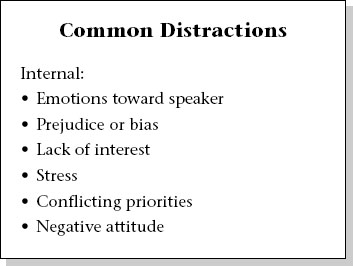
Slide 9-27

Slide 9-28
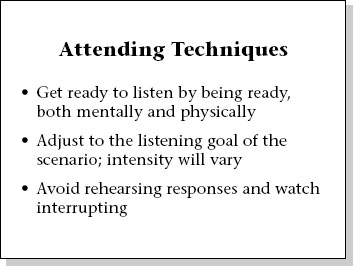
Slide 9-29
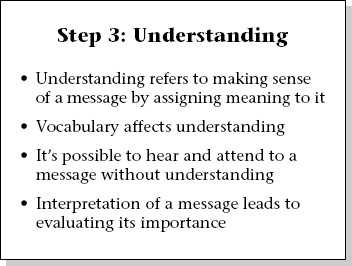
Slide 9-30

Slide 9-31
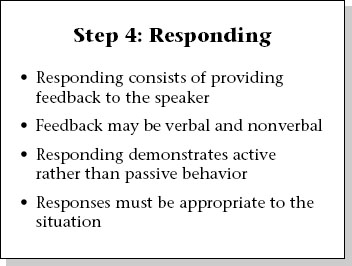
Slide 9-32

Slide 9-33

Slide 9-34
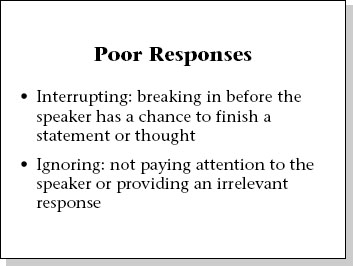
Slide 9-35

Slide 9-36
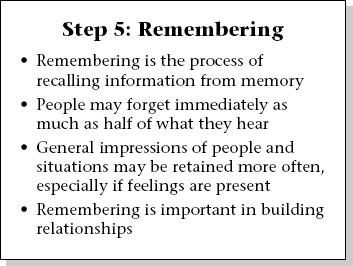
Slide 9-37
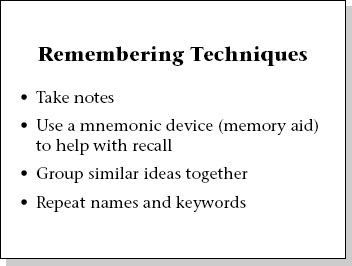
Slide 9-38

Slide 9-39

Slide 9-40
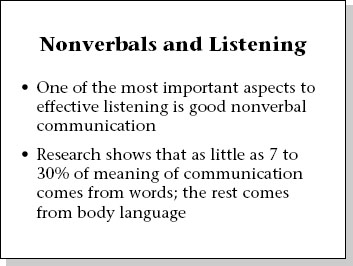
Slide 9-41

Slide 9-42
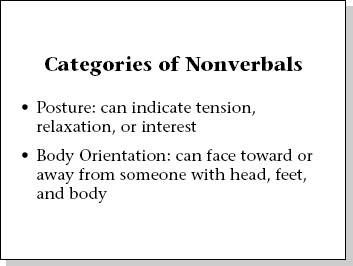
Slide 9-43
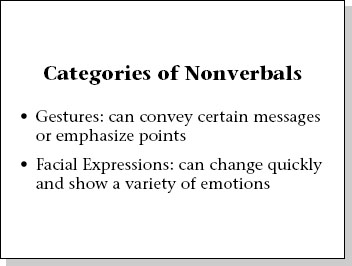
Slide 9-44

Slide 9-45
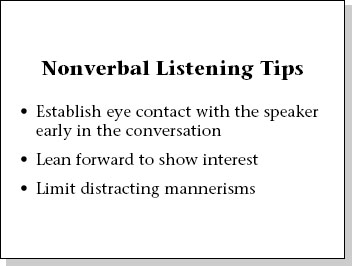
Slide 9-46

Slide 9-47
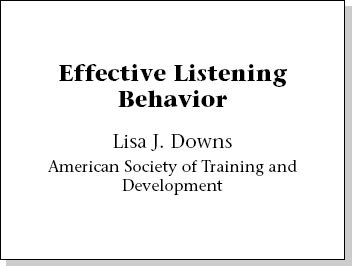
Slide 9-48
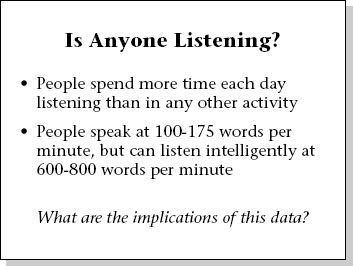
Slide 9-49

Slide 9-50
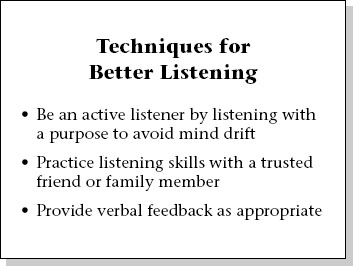
Slide 9-51

Slide 9-52
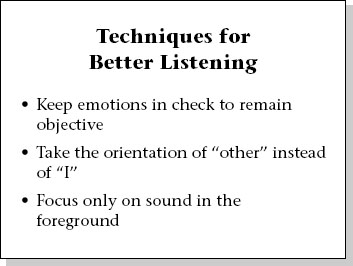
Slide 9-53

Slide 9-54

Slide 9-55

Slide 9-56
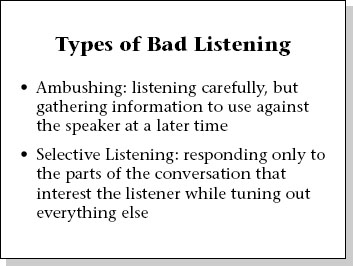
Slide 9-57

Slide 9-58
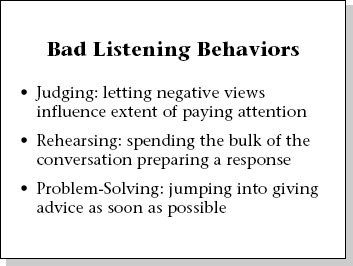
Slide 9-59

Slide 9-60
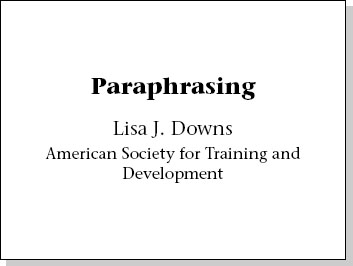
Slide 9-61
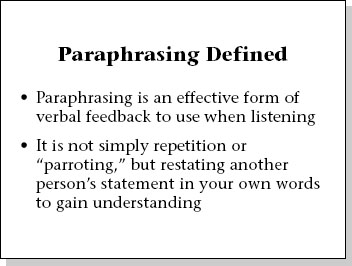
Slide 9-62
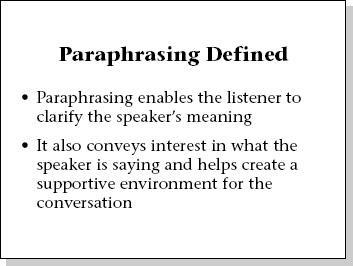
Slide 9-63
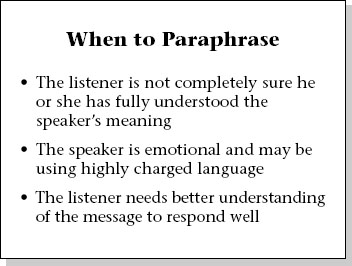
Slide 9-64

Slide 9-65
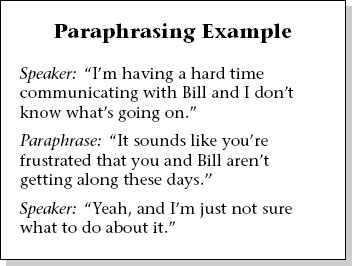
Slide 9-66
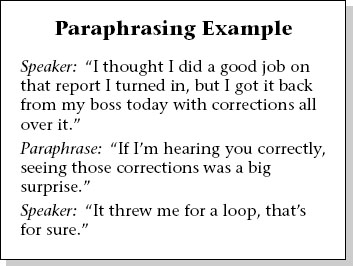
Slide 9-67

Slide 9-68

Slide 9-69
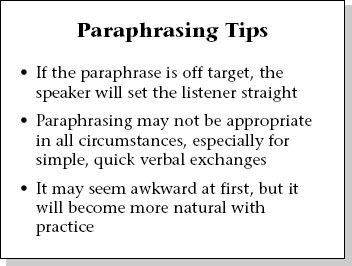
Slide 9-70

Slide 9-71

Slide 9-72

Slide 9-73

Slide 9-74
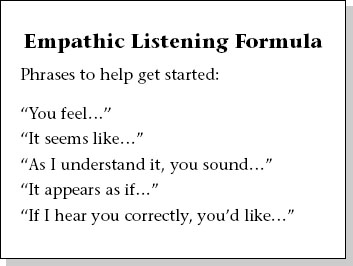
Slide 9-75
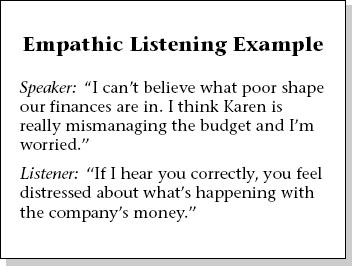
Slide 9-76
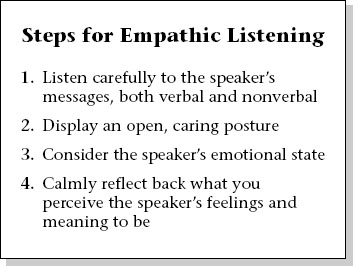
Slide 9-77
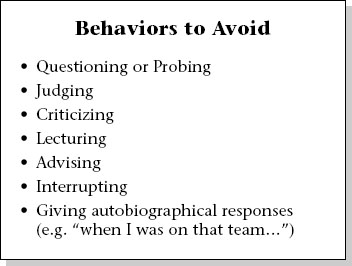
Slide 9-78
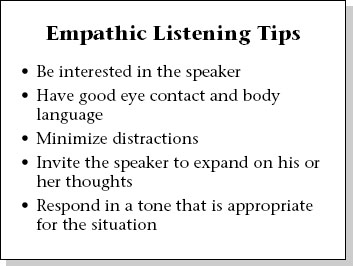
Slide 9-79
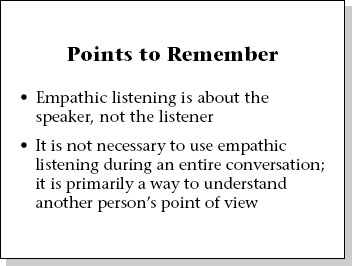
Slide 9-80
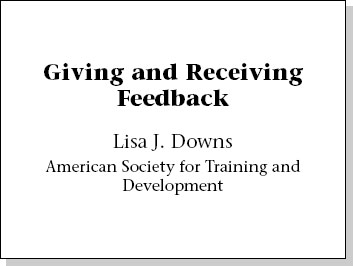
Slide 9-81

Slide 9-82
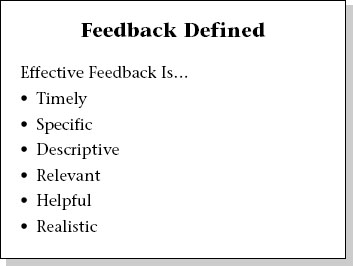
Slide 9-83
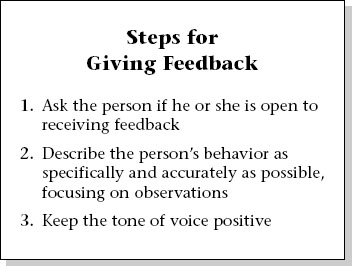
Slide 9-84

Slide 9-85

Slide 9-86
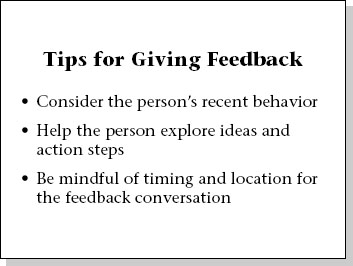
Slide 9-87
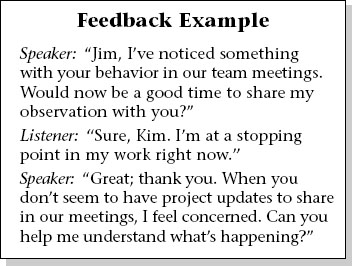
Slide 9-88
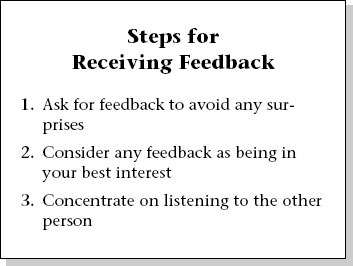
Slide 9-89

Slide 9-90

Slide 9-91

